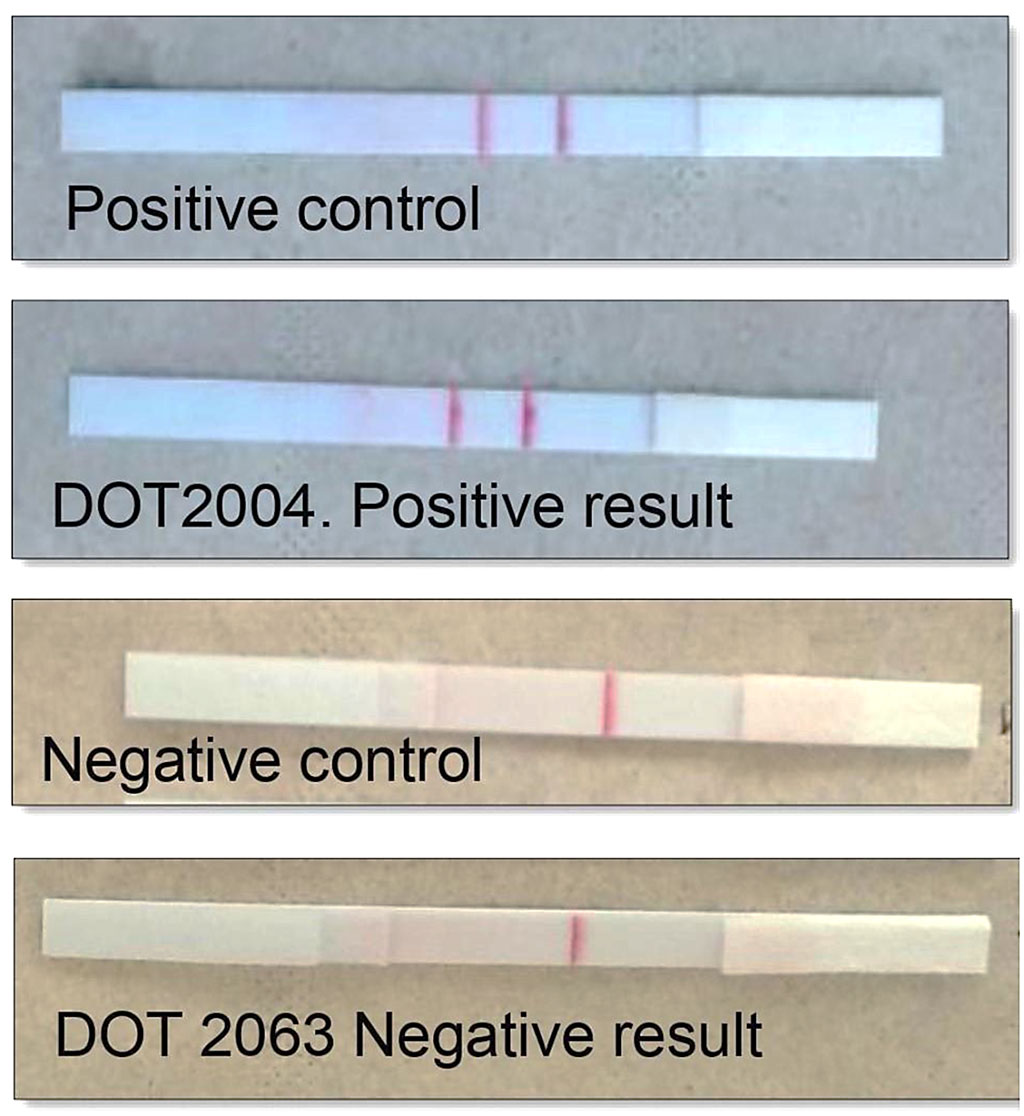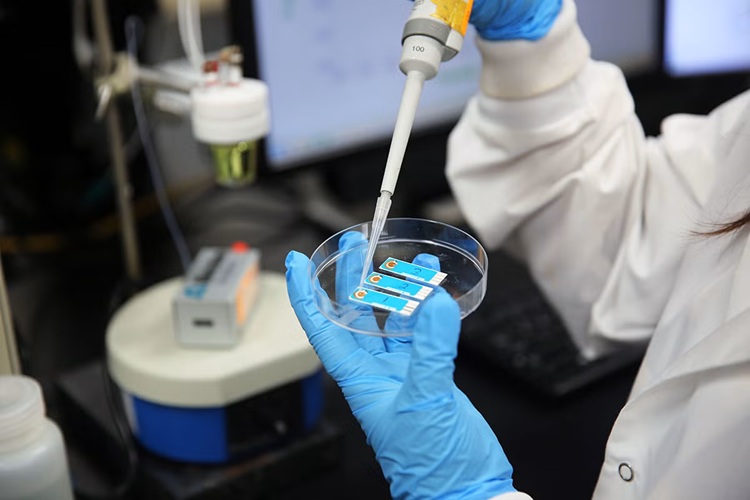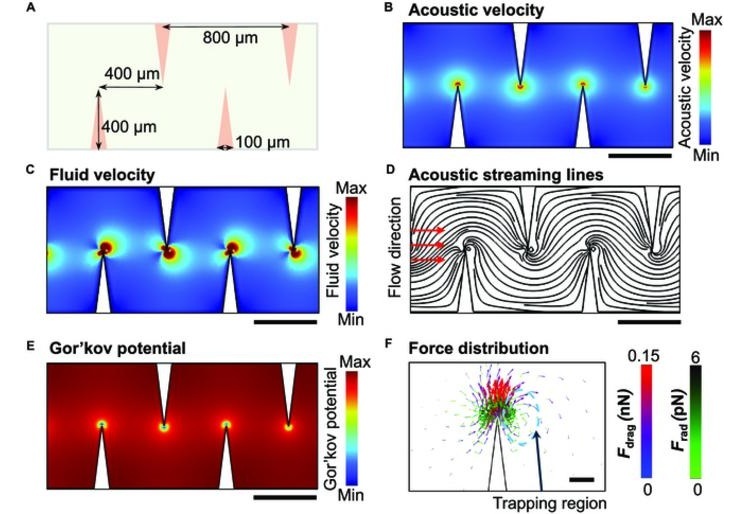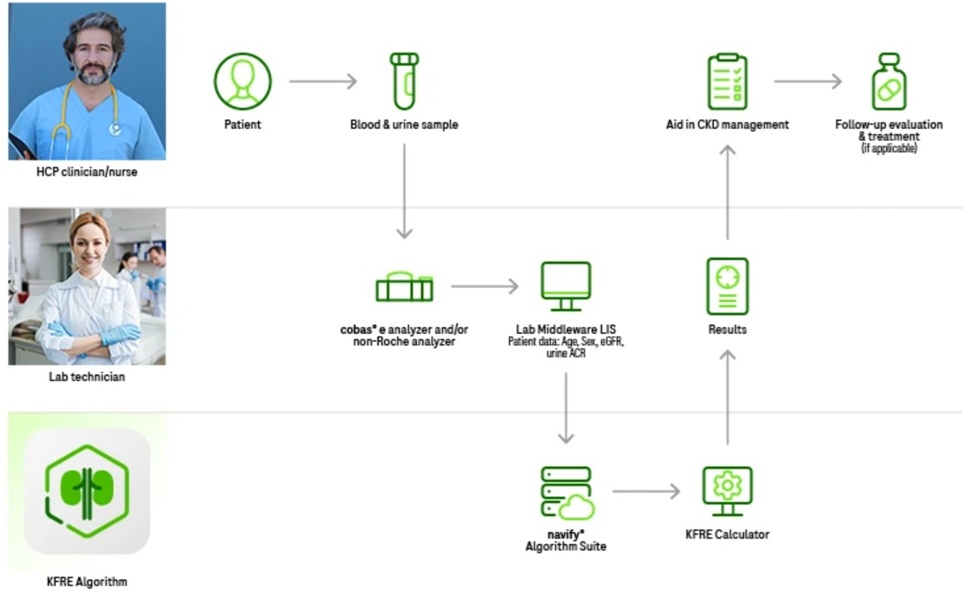RPA-LF Assay Evaluated for Cutaneous Leishmaniasis in Colombia
By LabMedica International staff writers
Posted on 17 May 2021
Cutaneous leishmaniasis (CL) is a recognized public health challenge in the Americas, with an average of 55,000 cases per year between 2001 and 2018 in 17 countries of the region. Most cases (79.4%) have been acquired in and continue to occur in rural areas.Posted on 17 May 2021
Currently available diagnostic methods for CL have several limitations. Light microscopic analysis of smears obtained from cutaneous lesions is the most commonly used diagnostic method for CL because of its low cost, yet its sensitivity varies widely depending on the experience and skill of the operator. In addition, sensitivity of microscopy is diminished in lesions of longer duration in chronic lesions with their notorious low parasite burden.

Image: Results of the Recombinase Polymerase Amplification-Lateral Flow (RPA-LF) assay for cutaneous leishmaniasis (Photo courtesy of University of Texas Medical Branch)
A team of tropical medicine specialists from the University of Texas Medical Branch (Galveston, TX, USA) and the Universidad Icesi (Cali, Colombia) conducted a cross-sectional study of diagnostic test performance between January 2018 and July 2019. There were 118 participants ≥2 years of age, with ulcerated skin lesions of more than two weeks’ duration were eligible and enrolled consecutively either in their residence (in rural Tumaco) by community health workers, or when seeking care at the primary health facility in urban Tumaco or the reference center laboratory in Cali.
The team utilized a composite “gold standard” based on microscopy of lesion smear, culture, histopathology of biopsy and qPCR18S as a reference. Minimally invasive swab and FTA filter paper samples were obtained by community health workers and highly trained technicians from ulcerated lesions. The investigators evaluated the diagnostic test performance of Isothermal Recombinase Polymerase Amplification (RPA) targeting Leishmania kinetoplast DNA, coupled with a lateral flow (LF) immunochromatographic strip, in a field setting and a laboratory reference center.
The scientists reported that the sensitivity and specificity of RPA-LF in the reference lab scenario were 87% (95%CI 74–94) and 86% (95%CI 74–97), respectively. In the field scenario, the sensitivity was 75% (95%CI 65–84) and specificity 89% (95%CI 78–99). Positive likelihood ratios in both scenarios were higher than six while negative likelihood ratios ranged to 0.2–0.3 supporting the usefulness of RPA-LF to rule-in and potentially to rule-out infection.
The authors concluded that RPA-LF is a valid, efficacious test to diagnose CL that could replace or complement microscopy in rural areas. Its combination with non-invasive sampling and low complexity requirements for processing and interpreting results position this test as an achievable alternative for diagnosis of CL at points of care in Colombia. The study was published on April 28, 2021 in the journal PLOS Neglected Tropical Diseases.
Related Links:
University of Texas Medical Branch
Universidad Icesi














